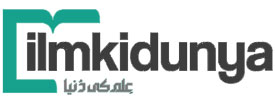-
 Home
Home
-
 News
News
Latest Educational News Stories
Daily update of all national, international news, picture stories, college / university announcements and educational events.
-
 Colleges
Colleges
Pakistan's Largest Database of Colleges and Universities
Explore Largest Directory of Private and Govt. Colleges, Universities and find best institute for your future Education.
-
 Courses
Courses
-
 Admission
Admission
-
 Lectures
Lectures
-
 Online Test
Online Test
Short Question
- 9th Class Physics Short Questions
- 9th Class Chemistry Short Questions
- 9th Class Math Short Questions
- 9th Class Biology Short Questions
- 9th Class Computer Short Questions
- 9th Class English Short Questions
- 10th Class Physics Short Question
- 10th Class Chemistry Short Question
- 10th Class Math Short Question
- 10th Class Biology Short Question
- 10th Class Computer Short Question
- 10th Class English Short Question
-
 Past Papers
Past Papers
-
 Date Sheets
Date Sheets
-
 Results
Results
Exam Results 2024
Check online Results 2024 Matric Inter BA BSc B.Com MA MSc M.Com CSS PCS MCAT ECAT of all educational boards and universities in Pakistan
-
 Study Abroad
Study Abroad
Study Abroad Programs and Opportunities for Pakistani Students
Explore free study abroad search to find programs, consultants, events to study in USA, UK, Australia, China, Malaysia and many others.
-
 Jobs
Jobs
-
 Tutors
Tutors
-
 More
More
-
 Apps
Apps
7th Class Computer Science Chapter 3 Online Test

MCQ's Test For Chapter 3 "Computer Science 7th Class Chapter 3 Online Test"
Try The MCQ's Test For Chapter 3 "Computer Science 7th Class Chapter 3 Online Test"
-
Total Questions10
-
Time Allowed10
Question # 1
What is the tpe of algorithm that uses a random numebr to decide the expected outcome.
Question # 2
What are the prerequisites for writing an algorithm
Question # 3
The algorithm which goes through al possible solutions untill the required soultionin found is.
Question # 4
Which does the diamond symbol represent in a flowchart.
Question # 5
Whcih step involves creating a set of instructions to solve a sprblem.
Question # 6
What is the disadvantage of using a flowchart.
Question # 7
The loops which have to be terminated are called.
Question # 8
Which tye of loop has an explicit end and executes its bodies a fixed number of times.
Question # 9
Which symbol represents the start or stop point in a flowcart.
Question # 10
Which tpe of algorithm goes through all possible solutions untill the required solution is found?
7th Computer Science Chapter 3 Test
Here you can prepare 7th Computer Science Chapter 3 Test. Click the button for 7th Computer Science Chapter 3 100% free full practice test.
Top Scorers Of Chapter 3 "Computer Science 7th Class Chapter 3 Online Test" MCQ`s Test
-
K kinza 22 - Nov - 2025 00 Min 50 Sec 20/20 -
A Ambreen Asim 04 - Sep - 2024 01 Min 06 Sec 20/20 -
U Usman Farooq class 5th-A10 17 - Dec - 2024 02 Min 22 Sec 20/20 -
C Ch Uzair 21 - Sep - 2024 02 Min 45 Sec 20/20 -
S Shehryar Shabbir 09 - Nov - 2024 00 Min 56 Sec 18/20 -
S Saim Ahmad 13 - Feb - 2024 01 Min 20 Sec 18/20 -
Y Yasir Mahmood 08 - Dec - 2024 02 Min 00 Sec 18/20 -
R Rasha Ali 17 - Sep - 2024 02 Min 56 Sec 18/20 -
M Mubashar Omar 21 - Sep - 2024 04 Min 47 Sec 18/20 -
T Tajwar Shahana 19 - Sep - 2024 01 Min 21 Sec 16/20 -
I Irfan Ashraf 08 - Dec - 2024 02 Min 14 Sec 16/20 -
A Ayesha Urooj 21 - Sep - 2024 02 Min 25 Sec 16/20 -
B BirdSpy Pakistan 06 - Jan - 2025 00 Min 30 Sec 14/20 -
U Umer Shahid 05 - Jan - 2024 04 Min 53 Sec 14/20 -
H hamza abid 27 - Feb - 2024 10 Min 50 Sec 14/20
| Sr.# | Question | Answer |
|---|---|---|
| 1 | Which step involves breaking down complex prblems into smaller parts. |
A. Decompostion
B. Pattern recongnition
C. Generalization and Abstraction
D. Algorithm Design
|
| 2 | Which tpe of algorithm goes through all possible solutions untill the required solution is found? |
A. Brute force algorithm
B. Recursive algorithm
C. Sorting algorithm
D. Divide and conuer algorithm
|
| 3 | Whcih step involves creating a set of instructions to solve a sprblem. |
A. Decomposition
B. Algorithm Design
C. Generalization and Abstraction
D. Pattern recongnition
|
| 4 | What is Computational Thinking. |
A. Problem -solving skills and techniques
B. Solving problems using computers
C. Breaking down problems into smaller parts
D. Recognizing patterms in images
|
| 5 | The loops which hae to be terminated are called. |
A. Infinite loops
B. Simple loops
C. Intermediate loops
D. Finite loops
|
| 6 | The loops which are never going to end are called. |
A. Finite loops
B. Infinite loops
C. Intermediate loops
D. Simple loops
|
| 7 | What is the characteristic of an algorithm that states that each step must be clear and lead to only one measning. |
A. Clear and unambiguous
B. Well-defined imputs
C. Well -defined outputs
D. Feasible
|
| 8 | What is the tpe of algorithm that uses a random numebr to decide the expected outcome. |
A. Brute force algorihm
B. Recursive algorithm
C. Sorting algorithm
D. Randomized algorithm
|
| 9 | The algorithm which goes through al possible solutions untill the required soultionin found is. |
A. Recursive Algorithm
B. Searchign algorithm
C. Brute force algorithm
D. Sortig algorithm
|
| 10 | Breaking down a problem into sub-problems is called. |
A. Generalization
B. Doconstruction
C. Design
D. Pattern Recognition
|

















